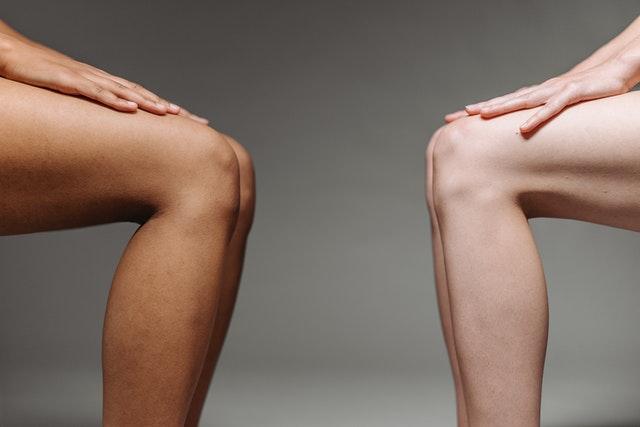
Common Diabetic Skin Conditions
When a person has diabetes, it throws their whole body off balance. They not only have to worry about the natural things that come with everyday life like eating healthy, getting enough sleep and exercising, but they also have to be mindful of all the complications that arise from their disorder. Diabetic skin problems is one of the most common concerns diabetics face. 30% of diabetics will develop skin conditions related to their diabetes.
Some of the most common skin conditions diabetics face are dry skin, and also itchy, red, and scaly legs. For the ones with type 2 diabetes, they are more vulnerable to developing a skin condition. Here is a close look on the common diabetic skin conditions.
Diabetic Dermopathy
This is a common skin condition that occurs in people with diabetes. It is characterized by reddish or light brownish spots on the legs. In most cases, it is found on top of the feet, thighs and shins. There have been reports that diabetic dermopathy can lead to permanent skin discoloration if left untreated.
Cause of Dermopathy
Dermopathy is the damage caused on the skin that leads to the formation of these brownish spots. This can be caused from dryness and itching due to poor circulation and itching. The disease is more common in older people and those with type 2 diabetes.
Mostly, after trauma or injury, these spots will take up to 2 weeks to form. Dermopathy is considered as a complication of diabetes and the lack of blood in the area where the skin damage occurs is responsible for this condition.
Dermopathy Signs and Symptoms
When the skin is in contact with water, it will form a dark ring around the damaged area. This dark ring is commonly seen when you are taking a bath or shower. Dermopathy will appear on the legs in areas like ankles, knees and thighs. The spots will turn brown and scaly as they enlarge.
Dermopathy Treatment
Dermopathy is not a serious skin condition. However, it is important to address the problem early to avoid further complications. People with diabetes should take good care of their skin by practicing good hygiene and using moisturizers to prevent further damage.
Diabetic Bullae
Also known as diabetic blisters, this skin condition develops when a person’s skin is exposed to too much moisture. It is usually found in the neck and armpits.
Cause of Bullae
In diabetes, the blood vessel in the skin becomes fragile, thus leading to increased blood flow and heat. When this happens, the blood vessels within the skin experience damage. In response to this damage, the skin will raise a blister on its surface.
Bullae Signs and Symptoms
The first sign of this condition is a reddish spot on the skin. The spot will expand and it will turn up to become red, painful, and itchy. The blisters should be popped and treated to prevent infection.
Bullae Treatment
To prevent infection of the affected area, it is best to wash the affected skin with antibacterial soap at least twice each day. The blisters should be popped as soon as they appear.
Diabetic Stiff Skin Syndrome
Also known as diabetic dry skin, this skin condition develops when a person’s skin cannot return back to its normal state after being stretched. It is usually found on joints like the fingers and toes.
Cause of Stiff Skin Syndrome
The stiffness of the skin is caused by the lack of collagen in your blood vessels. In diabetes, the amount of collagen produced by your body is less than normal. When this happens, the skin cannot return back to its normal state after being stretched.
Signs and Symptoms of Stiff Skin Syndrome
When this condition develops, the skin of a person will be rough and hard. The person will feel pain when stretching the affected area. In some cases, it can lead to the development of ulcers on the area.
Stiff Skin Syndrome Treatment
Stiff skin syndrome can be treated by restoring the blood supply to the affected area. This can be achieved by wearing cotton gloves when you are doing your daily activities. Also, it is important to keep the skin hydrated and moist to help in flushing out the excess waste your body produces.
Other Common Skin Conditions
Here are some of the other common skin conditions diabetics face:
1. Scleroedema – Scleroedema is a skin condition that occurs from the development of edema in the body. Mostly around the neck and upper back.
2. Scabies or pubic lice – This condition is caused when the body’s immune system is unable to attack and destroy the parasites.
3. Acanthosis nigricans – Most of the cases of this skin condition are seen on the back, chest and neck. It is characterized by dilated blood vessels that are dark and velvety-looking.
4. Vitiligo – This condition is characterized by white pigmentation loss of skin. It is caused by a lack of pigment in the hair and skin.
5. Corneal ulcer – This skin irritation occurs when the natural substances that protect the eye from infection is depleted or damaged.
How to Manage Diabetic Skin Conditions
To help manage your diabetic skin conditions, it is best to practice the following:
i. Maintain a healthy diet
Your diet plays an important role in your health. Eating the right kind of food will not only help prevent diabetes but it will also help you manage its complications. The foods you eat should be filling and provide sufficient nutrients to your body. Make sure that your diet is not lacking in fiber as it can help to purge toxins from your skin. Also, eat healthy fats like Omega-3 fatty acids and Omega-6 fatty acids.
ii. Manage your stress level
Managing your stress is one of the best ways to help combat diabetes. It is a stressful condition that can trigger or aggravate the skin conditions you have. One way you can manage your stress level is by exercising regularly. Exercise is an effective way to manage stress because it helps you to destress and relieve your body of excess toxins.
iii. Take care when showering or bathing
Avoid taking too hot of a bath or shower. The water will increase your skin’s temperature and it may cause the blood vessels to dilate and expand. Taking a hot shower can also dry out the skin causing it to become dry and brittle.
iv. Use moisturizers
Moisturizers help keep your skin moist, soft and supple. Apply moisturizer on your skin as soon as you get out of the bath or shower. This will help to prevent your skin from getting irritated and cracked.
Diabetes takes a toll on the body. It cannot only make you sick but it can also make you look old and unattractive. The condition can cause a variety of skin problems like the ones we discussed above. The good news is, managing your diabetes will also help you manage your skin. Follow the above guidelines and you will surely feel better about yourself.



